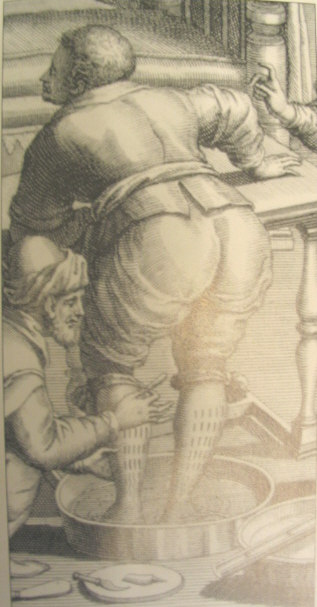Exploring
Illness
Across
Time and Place
c u l t u r e s
s y m p t o m s
Red swellings on the skin were a sign that the body had lost its healthy
equilibrium for a nineteenth century American. Since all parts of the
body were interrelated, an external swelling on the skin might bespeak
much graver danger. Moreover, the swelling was a clear indication that
harmful matter was trapped inside the body and needed to be let out, so
that the proper balance of input and output could be restored. 
The most important treatment for addressing a skin swelling was to drain out the pus or matter contained within the welt. This might be performed either by the patient, a family member, or the local doctor. Hopefully, when pierced, the swelling would release its contents with two important benefits. First, the harmful matter would be released, and second, it could be studied to reveal the nature of the illness that caused it. If the swelling released matter successfully, a patient would be much relieved. A couple of stories from the family of Stephen and Mary Hempstead, frontier settlers in Saint Louis, illustrate the importance of removing the contents of the swelling:
"Throughout their years in Missouri, many in the Hempstead family were beset with painful, drawn-together eruptions that held serious consequences. 'My wife complains of some thing gathering on her back and right Shoulder," Stephen Hempstead wrote in 1814. The family's physician made repeated deep incisions to discharge 'much matter' and bring out of the body all that was gathered in the abscess. Thought it was "a Shocking Sore," the ulcer was ultimately resolved and Mary Hempstead returned to health." (1)
Mary Hempstead returned to health after the harmful matter was released. By contrast, their grandson was not so lucky when he developed a sore that would not release its contents:
"In May of 1829, Stephen HempsteadŐs grandson, Christopher Keeney, a young physician, came to visit 'sick with a rising on his back Very dangerous.' A month later Keeney was still afflicted, 'in great body pain with an abisces or rising on his back bone.' The treatment given the young man was meant to aid the body in its struggle to consolidate the putrid material. A week later the family doctor was busy 'polticeing the abciss a trying to bring it to a head.' Despite the poultice, however, the rising refused to give up its essence. When lanced, it 'discharged no matter.' Dejected, Stephen Hempstead wrote that 'the abses hath been more then one year a growing, and I am fearful the young man will never get well he is coninuel in pain and ... much Emaciated in Body and his leg & foot debilitated.' ... The failure of medical intervention to bring out and expel the fluids filling Keeney's back abscess meant his prognosis was very grave, and indeed he died a brief time later." (2)
Notes:
1. Valencius, Conevery Bolton. The Health of the Country: How American Settlers Understood Themselves and Their Land. New York: Basic Books, 2002. pp. 67-68
2. ibid, p. 68.